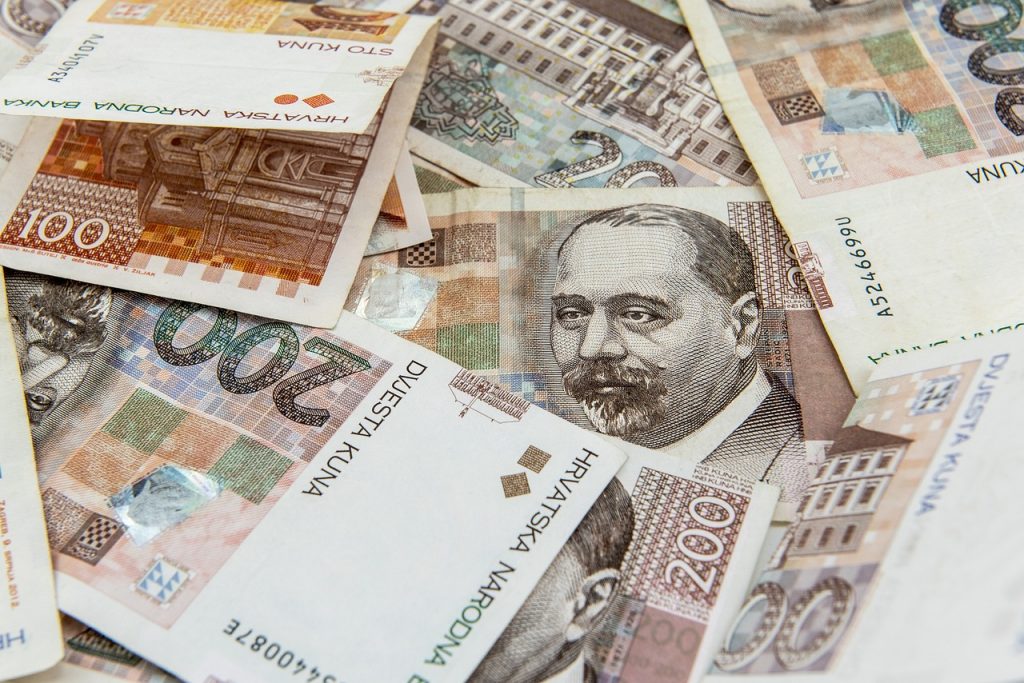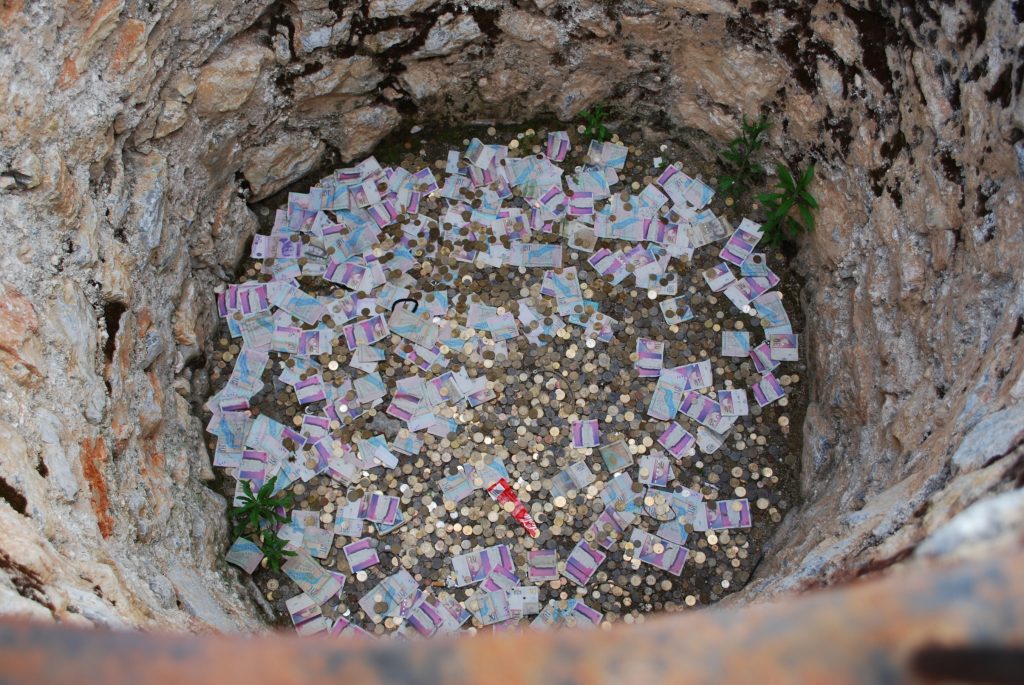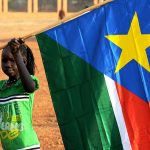While a region rich in culture, history, and diverse landscapes, navigating currencies in the Balkans can be tricky for travellers. While some countries use the euro, others have their own unique, official currencies, with a few having their own currencies that are tied to the euro. This guide breaks down the currencies of each Balkan country to help you prepare for your trip.
Defining the Balkans is an incomplete science, the same as trying to define the Midwest or Central Asia. For the sake of this guide, we are including all seven former Yugoslav Republics (Slovenia, Croatia, Bosnia and Herzegovina, Montenegro, Serbia, North Macedonia, and Kosovo), as well as Albania in our definition of the Balkans.
Table of Contents
What is the official currency in each country?
Albania: Lek (ALL)
The Albanian Lek (ALL) is the country’s official currency. Although euros are sometimes accepted in tourist areas, it’s best to carry lek for day-to-day expenses. When accepted, euros are taken by shopkeepers at an exchange rate of 100 lek to the euro, whereas the actual rate hovers between 95 and 98 to the euro. This means that you save a couple of percent by paying in local currency.

The Lek (plural: lekë) uses both coins and banknotes, with coins of 1 lek (rare), 5, 10, 20, 50, and 100 lekë. Banknotes are in the denominations of 200 lekë (polymer), 500, 1,000, 2,000, 5,000 lekë (paper, common), and 10,000 lekë (rare).
Cash is the preferred payment method, especially outside Tirana and other urban centres. ATMs are widely available in cities, although watch out for high transaction fees – 700 Lek per use is not uncommon!
You can exchange Euros, US Dollars, British Pounds, Swiss Francs, and even currencies such as Canadian and Australian Dollars at banks and exchange offices for very good rates.
Exchange Rate (December 2024): 1 Euro ≈ 98 ALL – check out the current rate here.
Bosnia and Herzegovina: Convertible Mark (BAM)
The Bosnian Convertible Mark (BAM) is the official currency of Bosnia and Herzegovina. It is pegged to the euro at a rate of 1 euro to 1.955 BAM, which comes from the old rate that was used to replace the Deutsche Mark with euros. While euros are widely accepted in tourist areas, it’s generally better to use convertible marks for day-to-day expenses. When accepted, euros are often taken by shopkeepers at a static rate of 2 BAM to the euro, slightly less favourable than the official exchange rate of around 1.95 BAM per euro.
The Convertible Mark (plural: konvertibilne marke or KM) uses both coins and banknotes. Coins come in denominations of 5, 10, 20, 50 feninga, and 1 and 2 KM. Banknotes are available in denominations of 10, 20, 50, and 100 KM, with 200 KM notes being uncommon.
Cash is widely preferred, particularly in rural areas and for smaller purchases. ATMs are readily available in cities like Sarajevo, Mostar, and Banja Luka, but fees for international cards can vary, so it’s worth checking before withdrawal.
You can exchange Euros, US Dollars, British Pounds, and other major currencies at banks and exchange offices throughout the country, typically for good rates.
Exchange Rate (December 2024): 1 Euro ≈ 1.96 BAM (fixed) – check out the current rate here.
Croatia: Euro (EUR)
Croatia adopted the euro in January 2023, replacing their own currency, the Kuna. This simplified currency concerns for travellers, with euros now being used for all transactions.

Prices are occasionally listed in Kuna in shops alongside euros, although always in smaller text. However, if something seems unusually cheap or expensive, double-check whether the price being quoted is in Kuna or Euros.
Credit cards are widely accepted in shops, restaurants, and hotels. For smaller purchases, carrying some cash is still a good idea. Exchange booths, while less common then when Croatia used the Kuna, are still common in big cities. Rates are generally good for major currencies, especially US Dollars and British Pounds.
Slovenia: Euro (EUR)
Slovenia adopted the euro in 2007, replacing its previous currency, the Slovenian Tolar. This makes travel more straightforward for visitors, as euros are used for all transactions throughout the country.
Credit cards are widely accepted in shops, restaurants, and hotels across Slovenia. However, for small purchases like coffee, snacks, or public transport tickets, carrying some cash is still recommended, especially in rural areas. Currency exchange booths are available in cities like Ljubljana and Maribor, although are less common then in other Balkan countries. Competitive rates are offered for major currencies like US Dollars, British Pounds, and Swiss Francs.
North Macedonia: Denar (MKD)
The Macedonian Denar (MKD) is North Macedonia’s official currency and is written денар in Macedonian Cyrillic script. While euros are sometimes accepted in tourist areas, it’s best to carry denars for day-to-day expenses. When euros are accepted, shopkeepers often use a fixed exchange rate of 60 MKD to the euro, though the actual rate may hover between 61 and 62 MKD. Paying in local currency will save you a few percent on conversion differences.
The Denar (plural: denari, денари in Cyrillic) is available in both coins and banknotes. Coins come in denominations of 1, 2, 5, 10, and 50 denari. Banknotes are available in 10, 50, (both polymer) 100, 200, 500, 1,000, and 2,000 denari (paper).

Cash is the preferred payment method, especially outside of Skopje and Ohrid. ATMs are widely available in urban centres, but fees of 500 MKD have been reported – check with your bank before travelling.
You can exchange euros, US dollars, British pounds, and other major currencies at banks and exchange offices, which are common and offer competitive rates. Just be aware that many are closed on Sundays, so plan ahead! Currencies such as the Canadian and Australian dollar can be exchanged at major exchange offices, though for worse rates.
Exchange Rate (December 2024): 1 Euro ≈ 61 MKD – check the current exchange rate here.
Kosovo: Euro (EUR)
Although Kosovo is not a eurozone or EU member, it has used the euro as its official currency since 2002, replacing the Deutsche Mark.
ATMs and card payments are common in cities like Pristina, although bear in mind that this may carry a transaction fee even if your account is from another Eurozone country. Cash is preferred for small-scale transactions and may be the only option available in rural areas.
Exchange offices are not common, although you should find somewhere to exchange Euros, US Dollars, Swiss Francs and (possibly) Albanian Lek in major cities.
Despite the Serbian Dinar previously circulating in Serb-dominated northern Kosovo, this has since been outlawed. Expect to use the euro in the entirety of Kosovo.
We recommend having plenty of small notes and coins handy, as Kosovo is one of the cheapest countries in the region, and change may not be available!
Montenegro: Euro (EUR)
Montenegro has also adopted the euro as its official currency, despite not being part of the eurozone or the EU. This makes travelling in Montenegro convenient for those already familiar with the euro, especially if coming from neighbouring eurozone countries.
Credit and debit cards are widely accepted, especially in tourist areas such as Budva and Kotor, as well as the capital, Podgorica. However, cash is useful for markets, kiosks, and smaller establishments.
While more touristy (and expensive) than Kosovo, we also recommend hanging onto those coins and small euro bills!
Serbia: Dinar (RSD)
The Serbian Dinar (RSD) is Serbia’s official currency. While euros are occasionally accepted in major cities, using dinars is recommended for most transactions to ensure accurate pricing and convenience.
The dinar is available in both coins and banknotes, although it is rare to come across coins except at supermarkets. Coins are issued in denominations of 1, 2, 5, 10, and 20 dinars. Banknotes come in 10, 20, 50, 100, 200, 500, 1,000, 2,000, and 5,000 dinars.

ATMs are readily accessible in cities and towns, albeit with large transaction fees. Card payments are widely accepted in hotels, restaurants, and shops. However, cash is king in rural areas and for smaller transactions, so carry enough dinars on you.
Exchange offices are ubiquitous in Serbia, and offer very competitive rates for euros, US dollars, British pounds, and Swiss francs. It is also easy to switch Serbian dinars back into these currencies, so don’t worry about exchanging too much!
Exchange Rate (December 2024): 1 Euro ≈ 117 RSD – check the current exchange rate here.
Final thoughts on currencies in the Balkans
The Balkans’ varied currencies reflect the region’s rich history and independence, while also bringing understandable confusion to visitors.
As with anywhere in the world, always carry a contingency of cash for emergencies, and don’t rely on your credit card. Be sure to let your bank know that you are heading to the Balkans before the start of your trip, as they will be less likely to block your card.
If navigating travel in the region feels overwhelming, why not join one of our regular group tours? Twice a year, in early winter and late spring, we offer our Ultimate Yugoslavia Tour, which takes you through all seven former Yugoslav republics. Additionally, we run a comprehensive tour of Albania every December. Click on the links above to find out more, or else drop us an email with any questions you may have.
See you in the Balkans!





